Acrowood DiamondRoll Shaft
How do you know when to change DiamondRoll shafts out for re-chroming or replacement?
This can be a perplexing problem, especially if you want an answer that not only tells you if the shafts are in need of attention now, or, if later, when they will need it.
Theory of Chrome Loss
People commonly believe that chrome gradually wears away due to the abrasive action of the chips. At Acrowood we have tried to measure this gradual chrome loss by physically measuring chrome thickness on DiamondRoll shafts over time, and we have had very limited success. In fact, we’ve found that a shaft will have seemingly the same thickness of chrome after several years of operation, with one important provision: that the chrome has not chipped off the tips of the diamonds. It is far more common to find that chrome simply chips or flakes off the shafts after a certain point.
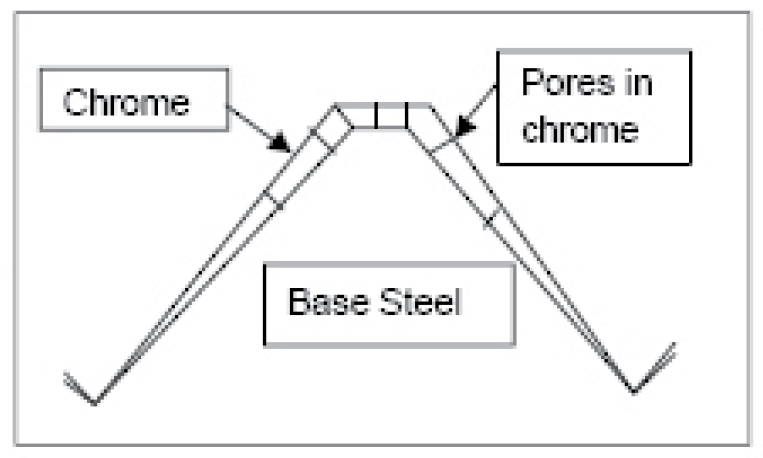
This wholesale loss is not necessarily related to traditional ideas about wear. Notice that the chrome is thickest at the top of the pyramid, and thinnest at the base. This is due to the electroplating characteristics of chrome itself. Chrome concentrates at points and irregularities over the surface of the object being chromed. Fortunately, this works to our advantage, putting the most chrome where the greatest protection is needed.
Why does chrome chip off? Chrome is a porous material. There are small cracks and pores that exist within the layer of chrome that allow liquid and vapor to penetrate to the base metal. This liquid penetration is an instigator of small amounts of corrosion that starts slowly but builds in severity. Eventually there is so little un-corroded metal for the chrome to adhere to, that it simply “lets go”. At this point, the tips of the diamonds, which is the part of the shaft in closest contact with the wet chips, experiences substantial and thorough loss of chrome over a wide area, and nearly all the tips lose their chrome at one time.

It should be noted that this sort of chrome loss is not seen when dry materials are screened, as in the particleboard industry. DiamondRoll screens on wet sawdust follow the pattern above, yet similar screens processing sawdust after the driers show no chrome loss after many years. We take this evi-dence as confirmation of our belief that it is water vapor that is the real culprit. In disc screens, for example, we have seen that the chrome on disc tips will last virtually with-out evidence of wear for several years, and then all the chrome will be lost in 6 months.
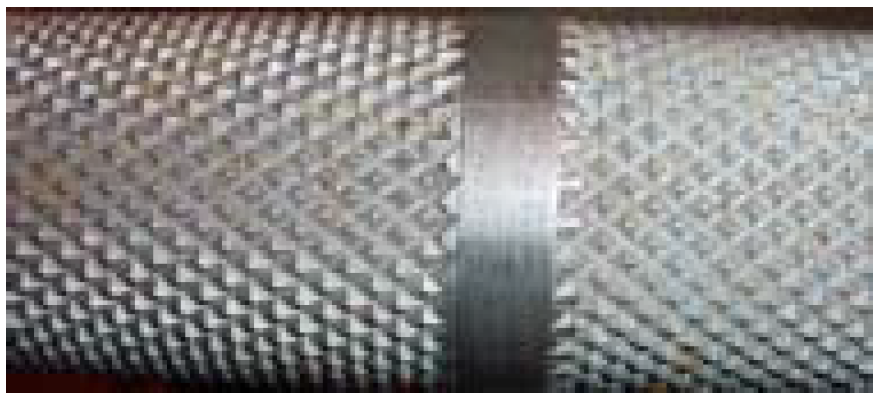
Practical Guide to Seeing Chrome on Diamond Tips Normal Wear and Tear
In the photo above the center bumper strip is shown, surrounded by diamonds that all have their chrome intact. There is a bit of wood fiber scattered here and there, but no chrome loss.
Wear Assessment Guide
Shaft End Damage
In some shafts there can be fiber built up between the bearing housing and the shaft end (see the arrows). This usually occurs at the end of the shaft where it first penetrates the bearing housing. As the shaft turns, this fiber will wear against the exposed steel surface creating a polished groove. Depending on severity, this part of the shaft can be repaired by being cut away, and a same-shaped sleeve used a replacement. Currently chrome is added in this area to resist wear and damage.


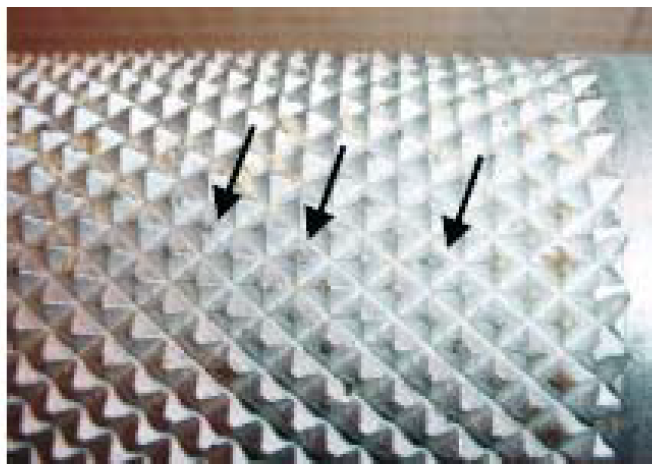
Tips at the arrows have lost their chrome. Can you see the dark base metal showing from below? These shafts can be re-chromed and brought back to a nearly as-new condition.
In this photo the knurl pattern is rather large, and it shows some features common to most DiamondRoll shafts. The pattern is cut in such a way as to leave a small flat top to the diamond tip. This is done to create a wear-resistant pad of thick chrome on the diamond tip, so this part is not fragile and subject to breakage unnecessarily. Chrome is deposited from the tip of the diamond towards the base, leaving the thickest chrome at the tip. Measurement of the base of the diamond can show that the chrome thickness is barely 1 micron in thickness, but this is sufficient as there is no opportunity for wear in this area.
The heavy impact, high wear area of the diamond tip is protected with the thickest layer of chrome.
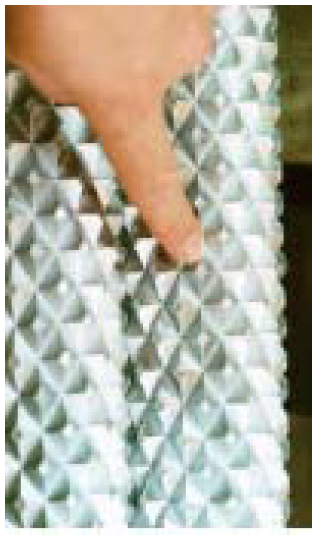
The heavy impact, high wear area of the diamond tip is protected with the thickest layer of chrome.
Acrowood DiamondRoll Shaft
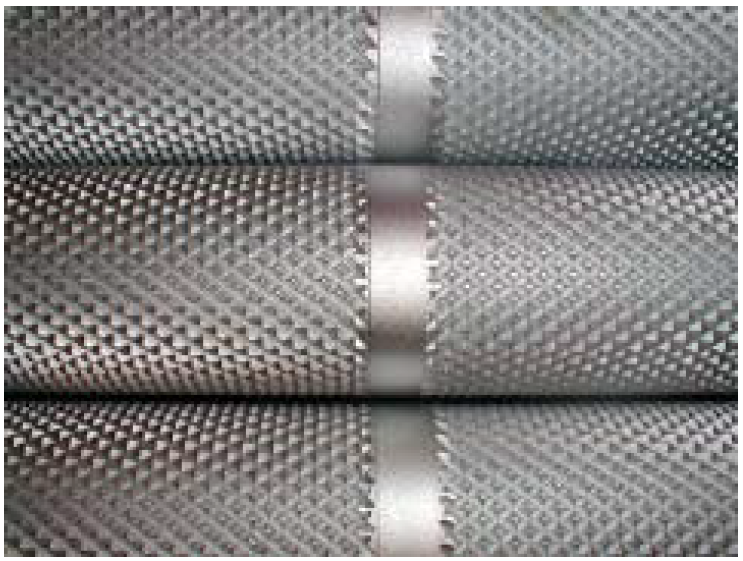
Bumpers protect the diamond tips from damage. In this example the spacing between the shafts is small, and the protection afforded by the bumper is important to keep the shafts from accidentally touching. If the bumpers are damaged or the chrome is lost, it is possible to repair the bumpers, to return them to an as-new condition.

When contaminants ride over the surface of the shafts on a continuous or regular basis, it is possible for the shafts to have all of the tips experience chrome loss, and it can be quite severe. In the worst cases the tips lose chrome and the base metal exposed begins to wear rapidly. By the time it is discovered the whole diamond is gone down to the base, and the shaft is not repairable. There is nothing that can be done at this point, and the shaft must be scrapped.

Shafts can develop odd patterns of chrome loss. Tips with only minimal chrome loss surround this “spot” of loss. If this shaft were to be re-chromed the impact of the 3×3 diamond zone (4×4?) would be mini-mal compared to the overall shaft surface. Perhaps 1-2% of the surface of the shaft is affected. Most tips are fine. It can be a judgment call to repair this shaft: it depends on the degree of screening selectivity needed by the mill.

When bearings spin in the housing, strange shapes can form in the shaft journals. Cutting off the damaged journal and inserting a high-strength stub end can repair this shaft. It is also important to note the corrosion on undamaged journals, which could have been prevented. Acrowood replaces many journals that were actually fine when the shaft was removed from the screen, but was then left in the rain and allowed to corrode.
Wear Assessment Guide
Guide To Re-Chroming
Chrome loss
Chrome loss from the tip of the dia-mond to the base can be diagramed as shown. Once the chrome is lost at the tip of the pyramid, the un-derlying metal wears away accord-ing to the typical forces: abrasion and corrosion. As the shaft’s base metal is lost, the tip of the pyramid moves from a nearly pointed condi-tion as-new to a gradually increas-ing square (from the point of view of the observer). Looking for the presence of small black squares can tell you a lot about the condition and extent of the remaining pyra-mid tip, and the chrome condition. At right is a table of dimensions, showing the size of the square tip that can be seen as the pyramid height is lost. Remember that in each case the base of the pyra-mid is a different size, so that it is important to know something about type of shaft being evaluated. All dimensions are in mm.
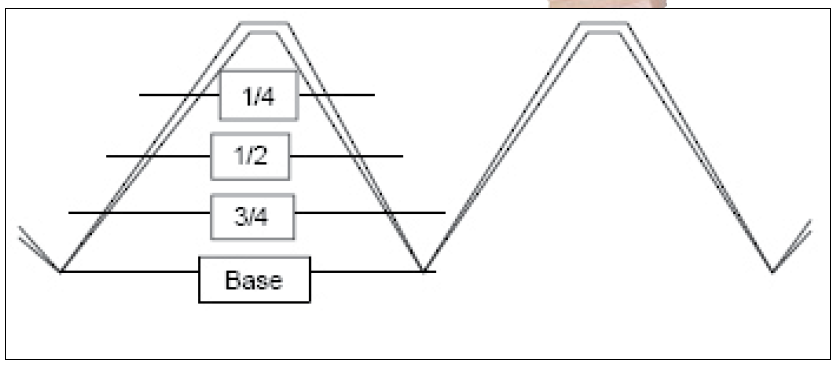
The Depth shown in the chart is the manufactured depth of the valleys between the diamond tips. This is the height of the pyramid before any wear has begun. To use this chart, you need to know what style of screen you are evaluating, what the designation for the knurl pattern on the particular shaft is, and what the average or typical square tip dimension (as worn) is for that
DiamondRoll Screen Assessment Guide (Chart)
| wdt_ID | Machine | Knurl | Depth | 1/4 | 1/2 | 3/4 | Base |
|---|---|---|---|---|---|---|---|
| 1 | DiamondRoll Fines Screen | 12 | 1.78 | 1.47 | 2.40 | 3.34 | 4.27 |
| 2 | DiamondRoll Fines Screen | 15 | 2.54 | 2.07 | 3.61 | 5.14 | 6.68 |
| 3 | DiamondRoll Fines Screen | 17 | 3.81 | 2.49 | 4.44 | 6.39 | 8.35 |
| 4 | DiamondRoll Particle Screen | 0.8 mm | 0.80 | 1.39 | 2.03 | 2.67 | 3.31 |
| 5 | DiamondRoll Particle Screen | 1.5 mm | 1.50 | 3.35 | 4.44 | 5.53 | 6.62 |
| 6 | DiamondRoll Particle Screen | 3.0 mm | 3.00 | 4.01 | 6.04 | 8.07 | 10.10 |
| 7 | DiamondRoll Particle Screen | 5.5 mm | 5.50 | 7.23 | 10.88 | 14.52 | 18.16 |
| 8 | DiamondRoll Thickness Screen | 17 | 3.81 | 2.49 | 4.44 | 6.39 | 8.35 |
Acrowood DiamondRoll Shaft Wear Assessment Guide
shaft or that portion of the shaft under evaluation. When the wear is complete and the pyramid is reduced to the base level, the square should be about the dimension shown in the “Base” column: at this point the shaft is clearly completely worn out. Since each of the screen styles
(fines, particle, and thickness) has a different diameter shaft to start with, the actual reduction in radial dimension for a shaft changes in each cell. Please contact Acrowood for clarification if this is a concern to you.
These charts show the degree to which the shaft has been damaged by looking at the exposed tip of the diamond and measuring the approximate square dimension of the underlying shaft material. If ¼ or less of the pyramid has been lost, it is likely that the shaft could still be re-chromed, providing that this loss is not widespread over the surface of the roll. If the damage is sporadic, or concentrated in small areas, the overall performance of the screen will likely not be affected. The worn areas will allow larger materials to pass into the “unders” fraction, but this may not be significant to your process. However, if the pyramids have been lost to an extent that ½ or more of their original size is missing, then the shaft cannot be brought back to anywhere near the original condition and should be scrapped. In this case the damage is likely to be too severe to tolerate in your process, and the cost of fiber requires that the worn shaft be replaced with one in good condition (possibly a shaft that has been rechromed from an earlier inspection).
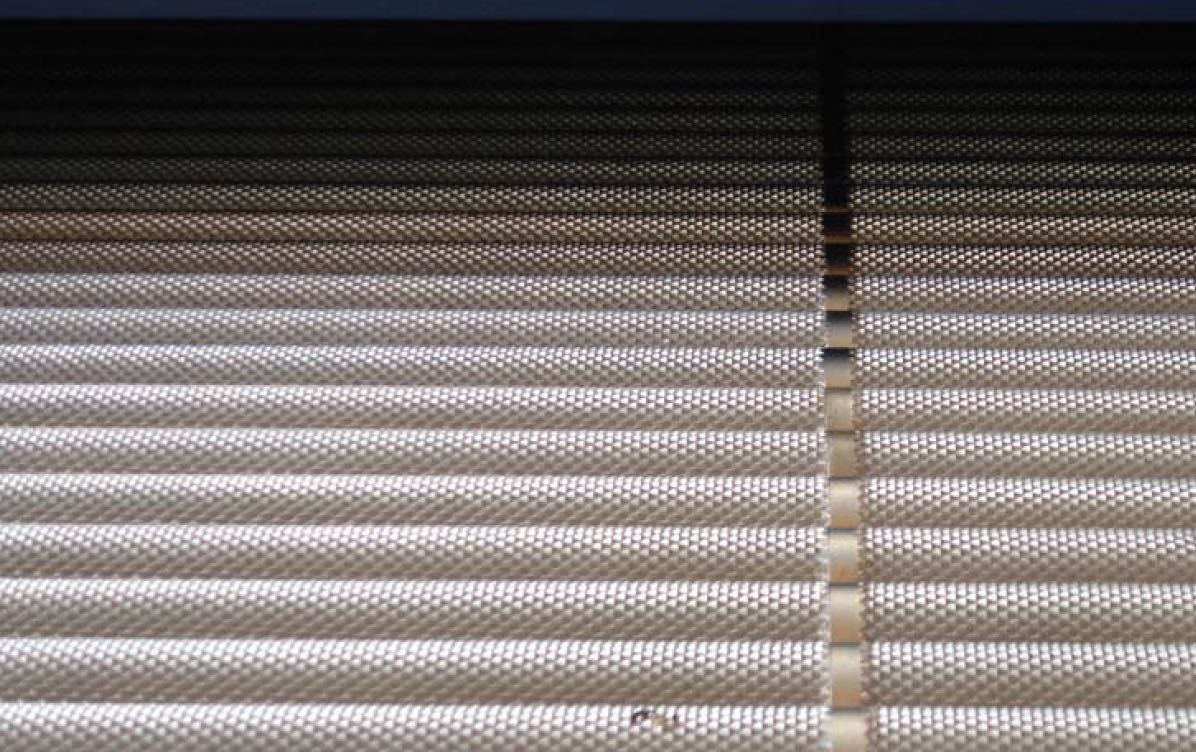
Summary
The key to keeping your screen in top operating condition is to inspect it at least every 6 months, and to have mildly worn shafts removed and rechromed on a regular basis. This process will keep your DiamondRoll screens in their best possible shape, and reduce the long-term maintenance costs at the lowest possible level. Any shaft than can be rechromed avoids a costly new replacement shaft.
